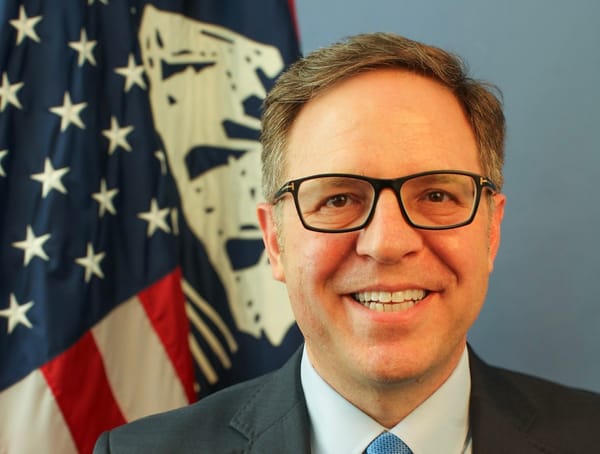How Five States Tackled Broadband Expansion During the Pandemic
Broadband Breakfast revisits what some state legislatures did to narrow broadband gaps.

August 31, 2021–The pandemic has shined a spotlight on the existing digital divide that exists across the country.
Both on the state and federal levels, lawmakers have come together in acts of bipartisanship to pass legislation with historic levels of funding and resources to improve digital literacy, narrow the “homework gap”, and build affordable broadband infrastructure in locations often overlooked in the past.
In fact, some states have passed legislation during the pandemic to approve a broadband office, bringing all 50 states to have created either a task force, commission, or authority to coordinate broadband expansion.
As the country awaits the House’s return in September, on which it will decide what it will do with the $1.2-trillion infrastructure bill, Broadband Breakfast looks back at what five states have done to bridge the digital divide.
Ohio
In June, the House proposed a $190 million budget granted toward expanding residential broadband across the state of Ohio.
In the spring, the state took steps to connect the more hard-to-reach homes by providing $20 million for the new Residential Broadband Expansion Grant Program, known as H.B. 2. The allocated money funded projects that providers consider unjustifiable from a business perspective.
This summers’ House version of the budget included another $190 million, but Senate Republicans excluded that funding in their proposal. The final budget agreement “axed a proposal to limit local governments from offering broadband services,” the Columbus Dispatch wrote.
In June, during deliberations over the budget, the Ohio Senate approved a version with language that would have forced existing municipal broadband services to shut down and prevented the formation of new public networks.
Under that language, many of the municipal broadband programs in cities such as Fairlawn, Hudson, Medina, and Wadsworth would not be allowed to operate if a private-sector company operate in the area. This could have been damaging to municipalities from being able to accept federal funding for the purpose of starting a broadband program.
Under H.B. 110, the state budget bill was signed into law by Governor Mike Dewine on June 30, and took effect on July 1. The final version of the bill determined that the residential broadband expansion grant program will receive a total of $250 million: $210 million in fiscal 2022 and $30 million in fiscal 2023. The final language in the budget bill also stripped out the Senate’s proposed limits on existing and future municipal networks.
North Carolina
In mid-May, the North Carolina House of Representatives unanimously approved a $750 million broadband expansion fund known as House Bill 947, just days after Governor Roy Cooper announced $1.2 billion in federal relief dedicated to closing the state’s digital divide.
The governor has said broadband access is a priority for his administration and announced in July the creation of a new office of Digital Equity and Literacy, a first for North Carolina and the first in the nation. This program is part of the newly created Division of Broadband and Digital Equity within the North Carolina Department of Information Technology (NCDIT), to spearhead Cooper’s plan in American Rescue Plan funds to close the digital divide in the state by 2025.
HB 947, also known as the Growing Rural Economies with Access to Technology — or G.R.E.A.T. Broadband Expansion Act — appropriates $350 million from the state’s fiscal recovery fund to the existing G.R.E.A.T. program, which was established in 2018 to fund broadband infrastructure construction. The bill also clarifies that $400 million will be set aside from federal stimulus funding in a future bill to create another grant program, called the Completing Access to Broadband Grant program.
Texas
Governor Greg Abbott said broadband access is one of his priority items for the Texas’ legislative session this year.
On July 13th, the Governor signed House Bill 5, which aims to provide and an expansion of broadband services to certain areas. A large portion of the Texas Broadband Bill includes the creation of a broadband development office. This was one of the few pieces of legislation that passed with strong bipartisan support in the highly partisan legislature. The bill received unanimous legislative committee support from the beginning.
Co-author of the bill and Republican Representative Hugh Shine said in an announcement in March: “I don’t think the ‘work-from-home’ mentality is going away as the pandemic comes to an end. Businesses no longer have to relocate to a major city, and employees don’t have to work in an office for many businesses. It is important for our economy across Texas that we have access.”
The new broadband development office plans to provide a comprehensive solution to broadband access for the lack of connectivity among millions of Texans. The program has announced a mission to providing long-term solutions to complex challenges including educating rural communities in digital literacy, keeping services affordable, and implementing the new 5G standard.
Virginia
Governor Ralph Northam announced in July he wants to spend $700 million of Virginia’s federal relief funding on expanding broadband access to all of Virginia.
The general assembly and Northam have agreed to provide $50 million in 2020 and an additional $50 million in 2021 to the Virginia Telecommunication Initiative, a public-private partnership to extend broadband service to areas currently without internet providers.
This month, the Virginia General Assembly convened in Richmond for a special session to allocate the federal funding, which was expected to last around two weeks with broadband being a key priority for state senators.
California
In July, Governor Gavin Newsom signed SB 156 to advance the state’s commitment to bridging the digital divide by increasing equitable, affordable access to high-speed internet service across California.
The $6 billion investment is a part of the comprehensive California Comeback Plan, a plan of recovery following the pandemic, and intends to expand broadband infrastructure and enhance internet access. The funding is divided to conquer the digital divide by giving $3.25 billion to build, operate and maintain an open access and state-owned middle mile network – high-capacity fiber lines that carry large amounts of data at higher speeds over longer distances between local networks.
Two billion dollars will be allocated to set up last-mile broadband connections that will connect homes and businesses with local networks. The legislation expedites project deployment and enables Tribes and local governments to access this funding. Lastly, $750 million is allocated toward the state’s new “Loan Loss Reserve” program to bolster the ability of county governments and municipalities to issue broadband bonds to finance their own fiber.
This bill is unlike any other legislation that California has previously passed in its effort to close the divide because it does not include the involvement of private companies such as AT&T, Frontier Communications, Comcast, and Charter.
“This is an essential first step towards reaching near-universal fiber access because it was never ever going to happen through the large private ISPs who are tethered to fast profits and short term investor expectations that prevent them from pursuing universal fiber access. What the state needed was to empower local partners in the communities themselves who will take on the long-term infrastructure challenge,” said Ernesto Falcon, a senior legislative council at the Electronic Frontier Foundation.
“This broadband package is historic. It transcends politics, and it will be a legacy project that will benefit generations of rural and urban residents alike,” said Newsom in a press release last month. “This legislation will yield vital, broadened access for California families by prioritizing the unserved and underserved areas, facilities, households, and businesses that remain disconnected in the digital era.”










